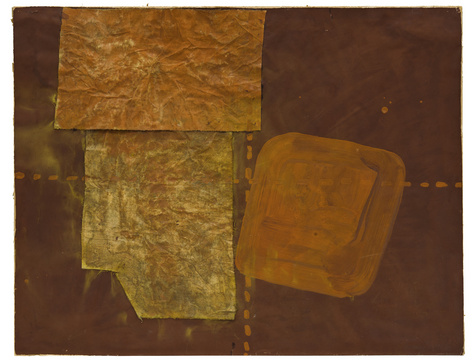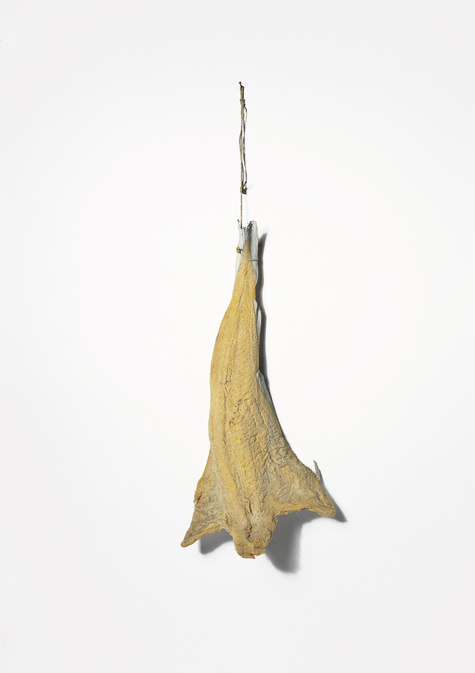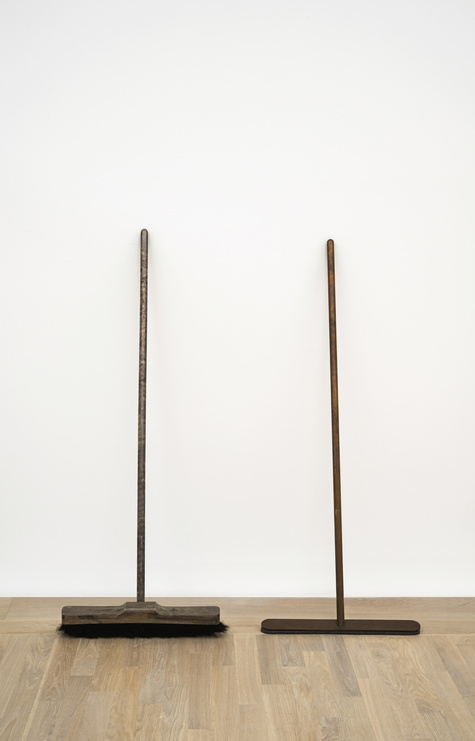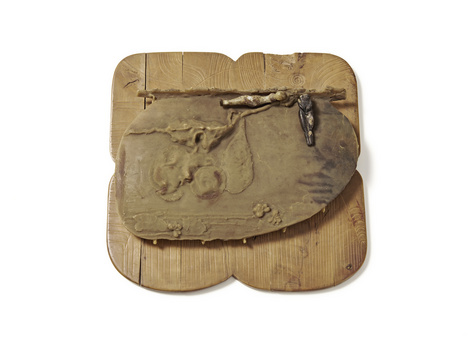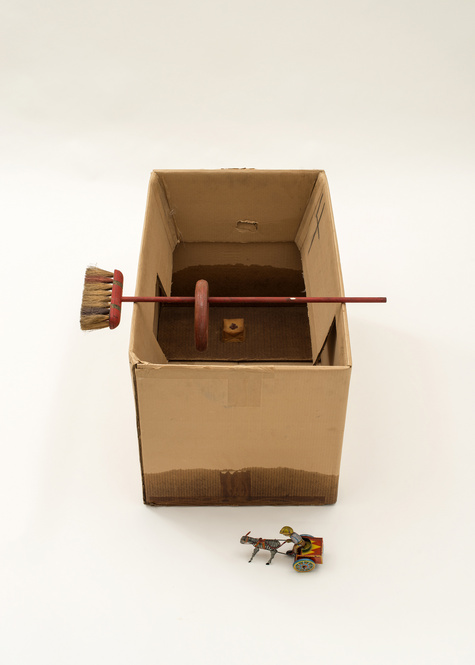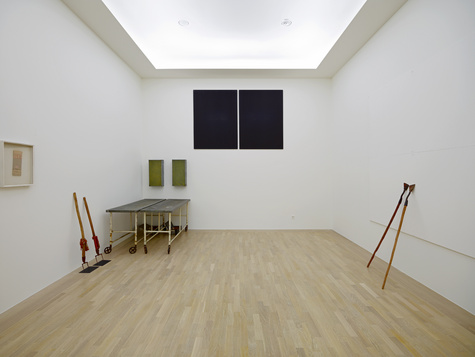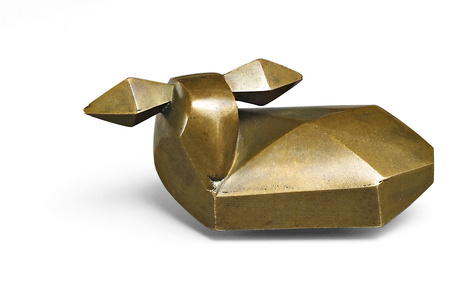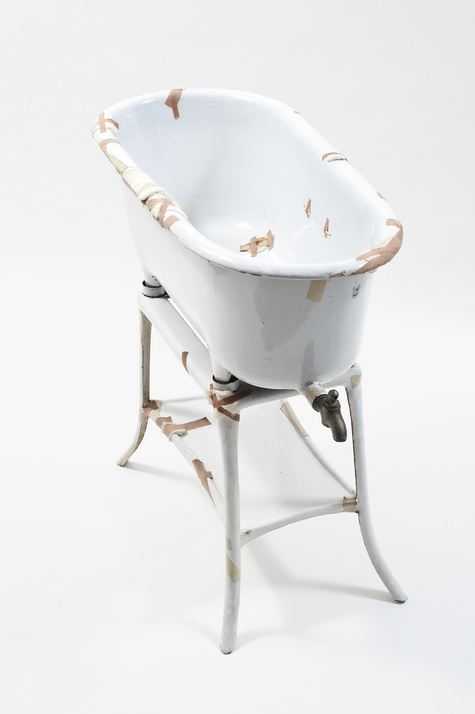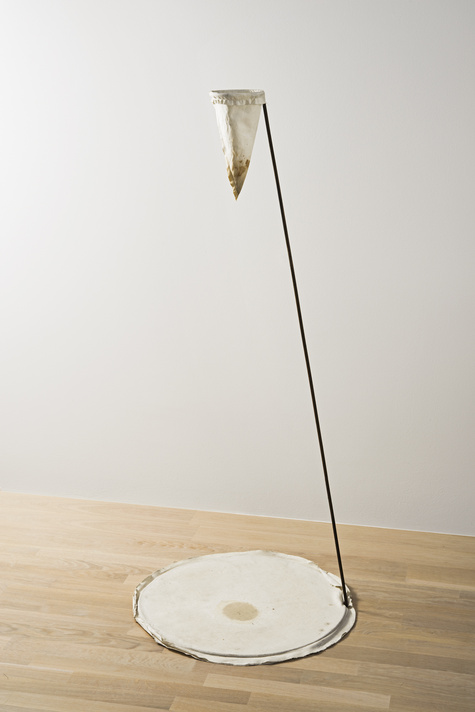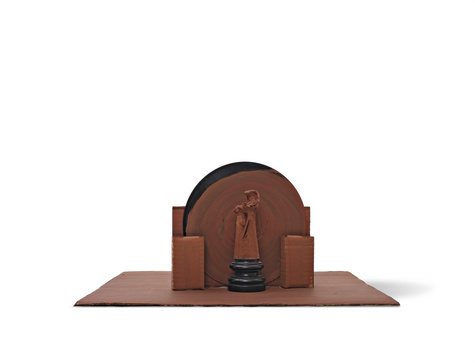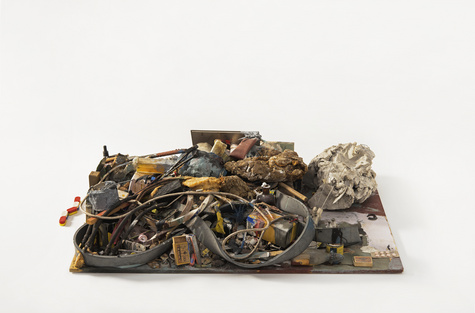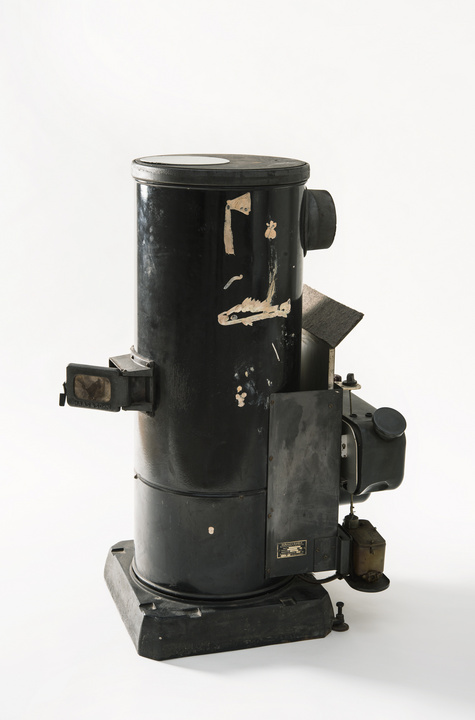The presentation in Franz von Lenbach’s studio wing offers a comprehensive overview of Joseph Beuys's work in sculpture, with key pieces from all stages of his creative evolution. "Stove," "Bathtub," "Hare's Grave," and many other works illustrate the range of sculptural possibilities that Beuys explored between 1948 and 1968. After 1970, he focused his energies on making sprawling large-format installations. The two iconic environments "show your wound" (1974/75) and before the departure from camp I" (1970/80) exemplify this phase in his oeuvre.
In February 1976, Joseph Beuys (1921 – 86) realized the environment zeige deine Wunde (show your wound) at the Kunstforum in Munich. The acquisition of the work for the Lenbachhaus in 1979 occasioned a public debate over the value of contemporary art. The purchase was seen as a provocative act, but also as an effort on the part of the museum to open up a new dimension for its collection. For the first time, the Lenbachhaus bought a significant work of art whose author's life and work bore no particular relation to Munich. In January 1980, Beuys installed the environment in Franz Lenbach’s former studio wing. He observed that "in this concert of objects, it is not I who speak; the things have their own inner language. Comprehending it is something everyone has to do for himself or herself."
"Show your wound" hauntingly explores the subject of death. The challenge posed by the title confronts the beholders with their vulnerable spot: the finitude of existence. At the center of the environment stands a pair of stretchers used to transport corpses, which Beuys salvaged from a coroner’s office. Lamps shedding a dim light are mounted above their head ends. Beneath the stretchers are two open tin vats filled with fat, with a thermometer and a test tube containing a blackbird’s skull resting on each; next to the vats stand preserving jars covered with gauze. Two rural tools, implements from the pre-Alpine uplands that originally served to strip the bark from trees, lean against the wall, cushioned by two white panels. Across the room, two double-pronged forks that were used to tamp rail track ballast — the shreds of cloth are remnants of this employment — are set against the wall, resting on small slates scratched with incomplete circles. Two framed copies of the newspaper "Lotta Continua", still in their mail wrappers, which are addressed to Beuys, are hung on the wall. The installation is completed by two school blackboards mounted on the short wall of the room bearing the chalk inscription "zeige deine Wunde." With the odd doubling of every detail, the work accounts for the duality of life and death, individual and society, present and past, actual reality and history.
In 2012, the Lenbachhaus strengthened its investment in the oeuvre of Joseph Beuys considerably by acquiring the environment vor dem "Aufbruch aus Lager I (before departing from camp I)", 1970/80 from the collection of Lothar Schirmer. The work examines the process of artistic creation in a portrait of the human being as an active, creative, and artistic being. A school blackboard is once again a central element of the installation, though this time it bears not a peremptory demand along the lines of "show your wound" but instead a complex diagram in which Beuys, laying out his idea of the expanded concept of art, illustrates the process leading from matter to figure or form. An evolving line, beginning with a squiggle and passing through a loop to conclude with a prism, is annotated with three fundamental elements of the artist’s theory of sculpture: "indefinite," "movement," and "form/definite." Beneath these terms appear the three concepts of "will," "soul/feeling," and "thinking."
Corresponding materials are set out on the table: a mass of fat on a modeling plate as matter without order and, separated from it, a tetrahedral block of fat as definite sculptural form. A knife rests between them, its tip pointing, like the needle of a compass, the way from shapelessness to defined shape. The two environments by Joseph Beuys, which have been set up in adjacent rooms at the Lenbachhaus, constitute a new focus in the museum's collection, enhanced by Lothar Schirmer’s donation of his eminent collection of sculptures by the artist to the Lenbachhaus. This set of seventeen works created between 1949 and 1970 enables the museum to illustrate all stages in Beuys’s oeuvre in the plastic arts with exemplary pieces. "Oven" and "Bathtub", "Gramophone" and "Hare's Grave", "Lavender Filter", "Fish" and "Mouse Hutch" represent the range of Beuys's sculptural invention between 1948 and 1972, before he turned to extensive environments in large formats starting around 1970.
Order the publication on "zeige deine Wunde"






